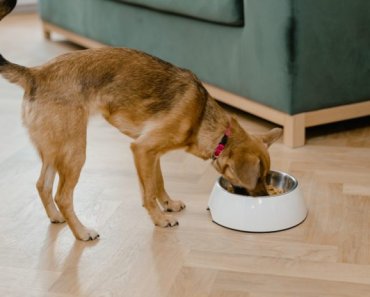Whether you’re a first-time dog parent, or are adopting your second, third (or tenth!) dog, following these ten steps will help ensure success — and a happy, healthy companion.
Congratulations on your new dog! If you’re a first-time dog parent (or even if you aren’t), you may have some questions. How much exercise does your new dog need? What should she eat? Where should she sleep? How do you go about training her? Below are ten steps to establishing a trusting, loving and healthy relationship with your new four-legged friend.
1. SET UP A DOG-FRIENDLY HOME
Safety first
Just as you would child-proof your home for small kids, you may need to make some adjustments for your new dog’s safety. Doors and gates need to be secured and fences high enough to prevent him from venturing out on his own. Use baby gates or exercise pens to prevent access to any unsafe areas, such as your pool or toxic plants. Store unsafe items out of reach, including household cleaners, medications, and foods that are harmful to dogs.
A quiet place
We all need a break sometimes, including our dogs. Designate a safe spot where your dog can retreat. It may be her bed, crate, or any place in the house she likes spending time in. A safe spot is especially important if you live in a busy household or have frequent visitors. When your dog rests in this location, no one should bother her.
Tip: Dogs’ ears and noses are much more sensitive than ours. Blasting music or strong fragrances from scented candles or air fresheners may be offensive and even harmful to them.
Special accommodations
Kudos to you if you’ve adopted an older, disabled, or injured dog. Just remember to make a few special accommodations to help him get around. Rugs and mats provide traction on slippery floors. Pet stairs and ramps will make it easier for him to get into the car.
2. PROVIDE HEALTHCARE
Veterinary visits
Annual vet visits are recommended for healthy adult dogs, while puppies and seniors need more frequent checkups. Dental care is equally important. Find a holistic or integrative veterinarian you trust. Consider pet health insurance or set aside funds for future problems. Veterinary expenses may vary depending on your geographic location, but they add up quickly and are especially high for emergency cases or specialty care.
Tip: Rabies vaccines are required by law while others are recommended depending on where you live and your dog’s lifestyle. To avoid over-vaccinating, ask your veterinarian about titer tests, which measure the level of antibodies against a particular disease.
Grooming
Grooming needs vary based on your dog’s breed. But all dogs’ nails need to be trimmed and their coat, ears, and eyes kept clean. Healthy dogs don’t need baths as frequently as humans do; in fact, bathing a dog more than once a month can dry out her skin. For some, just a few baths a year are sufficient.
3. FEED A HIGH QUALITY DIET
A high quality diet is very important to your dog’s well-being, and will go a long way towards keeping him healthy for years to come. Numerous options are available — from home-prepared raw or cooked diets to premium packaged foods. Some supplements may be needed to provide your dog with all the necessary nutrients. Consult with your veterinarian or a canine nutritionist about which diet is right for your dog, and what supplements she should take. Avoid low-end foods that contain fillers, by-products, and artificial flavors and colors.
4. ESTABLISH A ROUTINE
Dogs thrive on routine. A predictable schedule provides structure and a sense of safety. This is particularly helpful when you first bring your dog home. Establish a daily routine for meals, walks, training, play, and rest.
If you’ve never had a dog before, you may wonder how often they need to go to the bathroom. Dogs usually need to eliminate after waking up, after excitement and play, after meals, and before bedtime. Giving your dog plenty of regular opportunities to use the bathroom outside will make potty training much easier.
Tip: A private dog training class is best for addressing specific behavior challenges — for example, if your dog is fearful, reactive, or shows signs of aggression.
5. START TRAINING RIGHT AWAY
Whether you bring home a puppy or an adult dog, set rules from Day 1. First, create an environment where your dog cannot engage in unwanted behaviors that can quickly turn into habits. Then teach him what you want him to do. If you need help with training, look for a professional force-free dog trainer who uses positive reinforcement. Group classes are fun provided your pup is friendly around other dogs and people.
A group setting provides extra socialization and teaches your dog to behave around distractions.
Easy training anyone can do
Even if you have never trained a dog before, this effective training technique is a good start. Whenever your dog does something you like, immediately praise him and reward him with a treat or something else he loves, such as a belly rub or game of fetch.
Important behaviors to reward include sitting, lying down, going to bed, picking up a toy instead of your slipper, looking at you for feedback, and walking nicely on the leash. Over time, you will notice your dog offers these behaviors more often because he has learned they result in a reward.
6. MAKE TIME FOR EXERCISE AND PLAY
Adequate physical exercise keeps your dog healthy and can help with behavior problems. Regular walks keep your dog fit and provide mental stimulation. Other fun activities include hiking, swimming, jogging, agility, or herding. The type and level of exercise needed or recommended depend on your dog’s breed, age, and overall health. If you are not sure, consult with your veterinarian before starting an exercise regime.
Tip: Walk your dog with the leash attached to a harness rather than a collar. If she pulls, a collar can cause injuries to her neck, thyroid, and esophagus.
Most dogs love to play. Fetch, tug, hide-and-seek, and having your dog chase you are popular games. Not only are interactive play sessions fun and provide physical exercise, they also strengthen the bond between you.
7. PROVIDE MENTAL ENRICHMENT
Mental enrichment is as important as physical exercise. Dogs that lack mental stimulation may become bored, frustrated, anxious, or depressed, which can lead to behavior problems. Social activities, new experiences, an occupation, and the opportunity to engage in normal canine behaviors build confidence, release stress, and result in greater mental health and cognitive function. Here are some mental enrichment activities you can easily incorporate into your dog’s daily routine:
- Add variety to your walks and allow your dog to explore new areas.
- Allow social contact with other dogs, animals, and people.
- Provide different types of toys.
- Hide treats around the house or in boxes for your dog to find.
- Feed him from food dispensing toys.
- Teach your dog tricks.
- Take a training or canine sports class together.
8. SOCIALIZE YOUR DOG
Dogs are social animals so it’s important to allow your dog to meet people and other dogs. If she is reactive or shows aggression, immediately seek help from a professional dog trainer or canine behaviorist who uses positive reinforcement techniques.
If our dogs had their way, they’d be with us 24/7. Leaving your dog alone at home for many hours on a regular basis can cause anxiety and loneliness. If you have to be out a lot, consider a doggie daycare, pet sitter, or dog walker. If your dog struggles when left home alone even for short periods, seek help from a professional trainer or canine behaviorist experienced in treating separation anxiety.
Where should your dog sleep?
Because dogs are social, they enjoy sleeping near their families. If you prefer not to have your dog in your bedroom at night, find a comfortable spot in the house where she can still be close to you. Her sleeping place needs to be protected from cold, drafts, moisture, and heat.
There is nothing wrong with snuggling with your dog in bed if you both enjoy it. It’s a great way to bond with her. Just make sure you teach her to get off the bed when you ask her to.
9. EXPECT CHALLENGES ALONG THE WAY
Dogs are complex living beings. Their behavior is influenced by their individual personalities, experiences, and life stages. Puppies require a lot of supervision, training, and patience. Adolescent dogs are like their human counterparts and tend to challenge and test you as they become more independent. An adult dog’s behavior is greatly affected by his past experiences, which you may not know anything about. So expect some challenges along the way. Be aware that your new dog may inhibit his behaviors at first; his true personality will show once he feels more comfortable. Teach him the behaviors you like, but also respect his individual personality and have realistic expectations.
10. EDUCATE YOURSELF
One of the best things you can do for your dog is learn about canine behavior and body language. Understanding and responding appropriately to your dog’s communication signals will greatly enhance the bond between you, and lay the foundation for a happy, lifelong relationship.
Andrea Gronwald is a certified family dog trainer through Raise with Praise, Inc., owned and operated by Paul Owens, a leading positive dog training expert. She has worked with dogs as a volunteer for two Humane Societies. Andrea and her dog are also part of a volunteer pet therapy program for veterans. She recently started working as a trainer for a local dog training company. Andrea is a strong proponent of positive training methods.



























